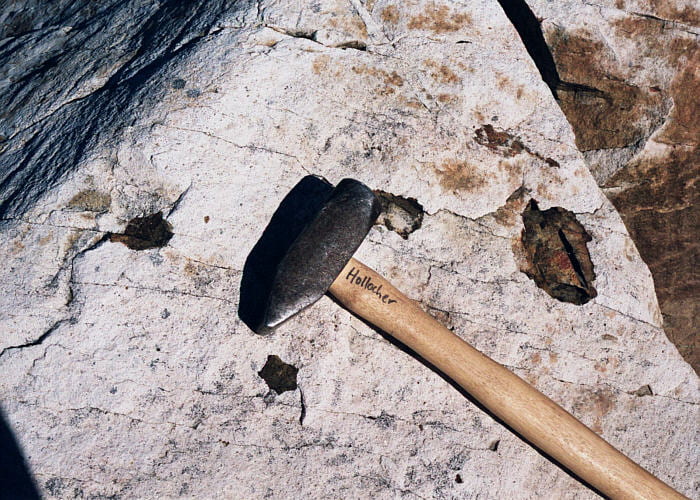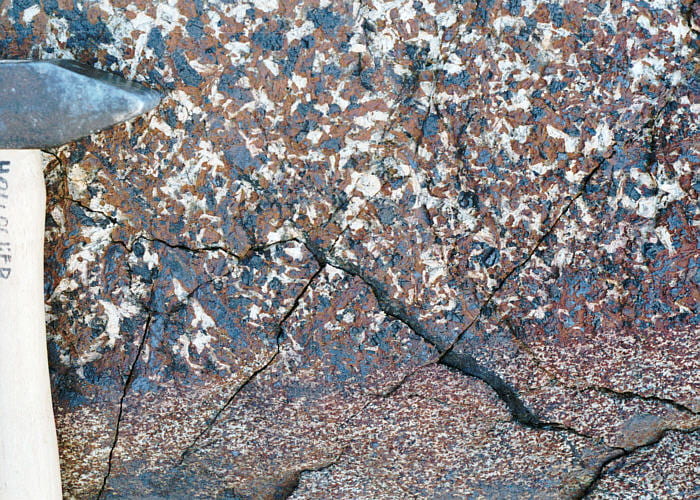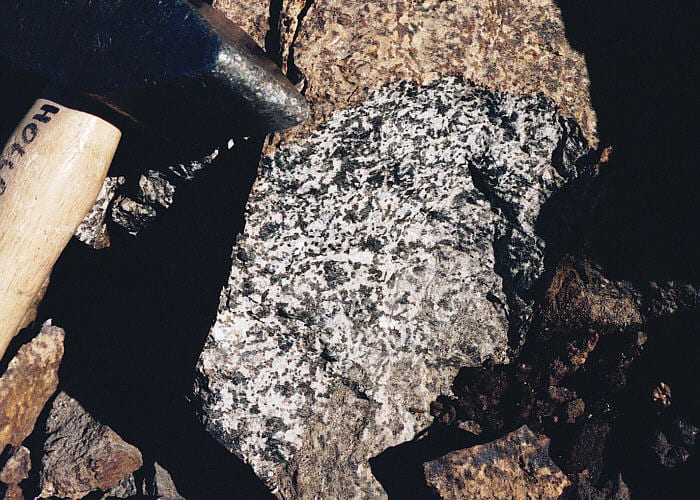Granophyre refers to fine-grained granitic material, commonly though not always with graphic intergrowths. In the Skaergaard, granophyre occurs in three forms: transgressive granophyre dikes, granophyre in gabbroic pegmatite, and as interstitial granophyre in the gabbros, common in UZb and UZc.
Transgressive granophyre dikes

Two transgressive granophyre dikes, made of a fine-grained granitic rock (granophyre), mostly of quartz, alkali feldspar, brown hornblende, and biotite. Isotope systematics strongly suggest that this material, as distinct from granophyre associated with some of the mafic pegmatites, is a partial melt from Archean gneiss surrounding the Skaergaard pluton.

Basalt inclusions in a larger dike of transgressive granophyre. The Granophyre crosscuts a basalt dike here, so the inclusions are probably local. The basalt dikes are characteristically highly fractured, and so supply numerous xenoliths.
Granophyre in gabbroic pegmatite
This type of macroscopic granophyre was seen by me only in UZc, one of the most differentiated parts of the Skaergaard, where they represent a significant fraction of the pegmatite volume (maybe 1 to 10%). They may represent segregated granitic liquid, perhaps even immiscible liquid.

A mafic pegmatite in UZc: white plagioclase, black oxides, and rusty olivine and pyroxene (or former pyroxenoids), with a fine-grained, gray granophyre filling much of the interior.

The same pegmatite as in the image immediately above, in a less granophyre-rich part. This shows contact with the host gabbro, at the bottom. Note the irregularity of the contact. My guess is that there is considerable interstitial granophyre between the gabbroic crystals, but I have to admit I didn’t look.
Interstitial granophyre in gabbro
Interstitial granophyre is usually visible only in thin section, as microscopic patches of fine-grained granitic material interstitial to larger plagioclase and other cumulate minerals. It probably represents in situ granitic liquid residua. In a few places near the sandwich horizon I think I saw some little patches that were visible by eye, but got no photos.

Photograph of sandwich horizon candidate 1. It’s composed of plagioclase, olivine, oddly patchy pyroxene, and granophyre patches. It’s true that granophyre is invisible at this scale.
